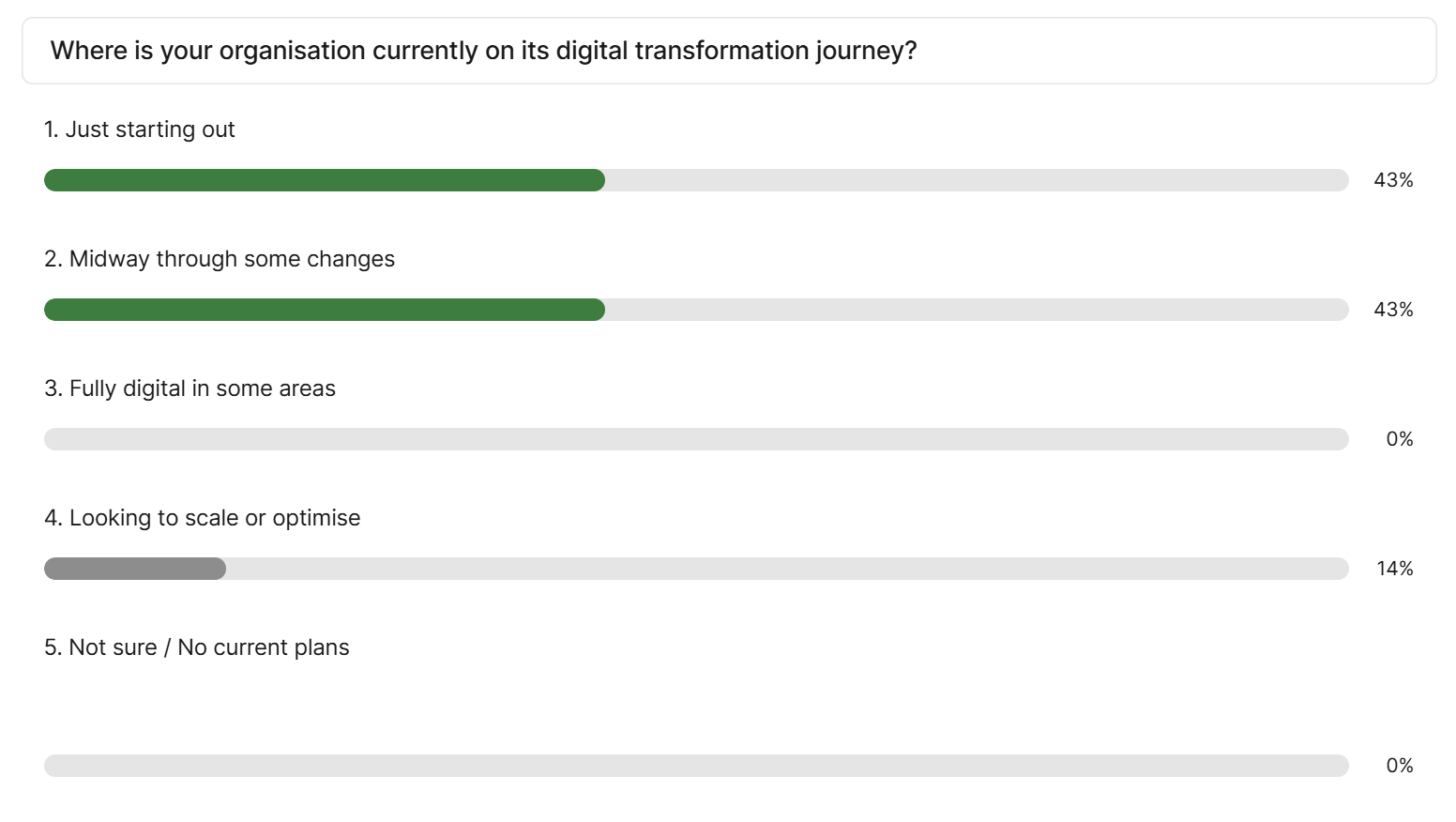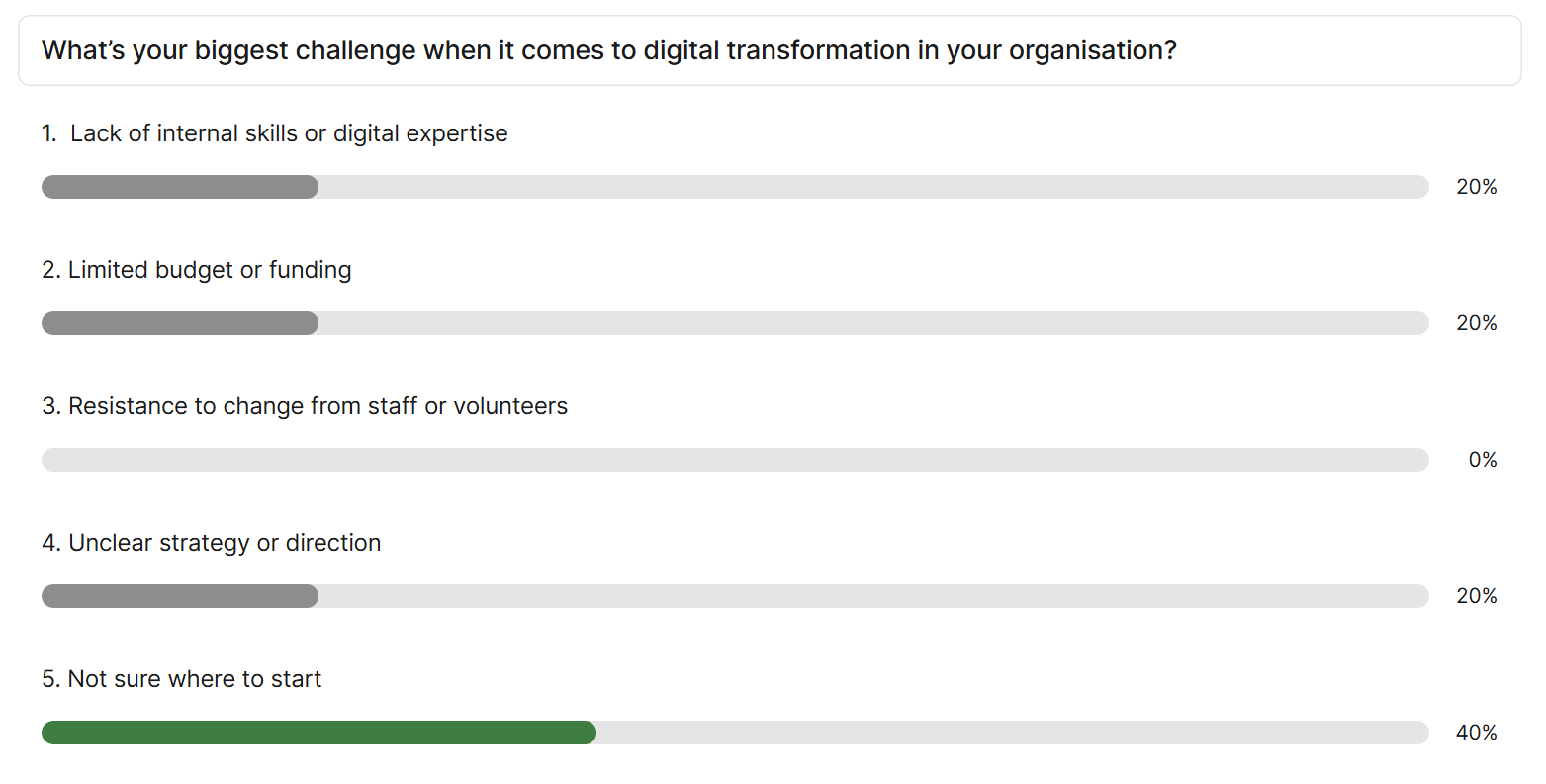The world of retail, particularly in the non-profit (NFP) sector, is rapidly changing. As technology continues to evolve, it’s essential for organisations to adapt and embrace digital transformation. This transformation not only boosts operational efficiency but also enhances community engagement, fundraising efforts, and overall impact.
On July 22, 2025, Rosterfy was proud to present a Lunch & Learn session titled Embracing Digital Transformation in NFP Retail, featuring a stellar line-up of guest speakers including Amy Low, CEO of The Social Outfit, and Julie Trell, a globally respected social innovation leader. The session was expertly hosted by Lee-anne Knight, Chief Customer Officer at Rosterfy.
Charitable Reuse Australia hosted the event, the session served as an important thought leadership piece by Rosterfy—bringing together industry leaders to explore how digital tools and strategies can maximise impact in NFP retail, particularly for organisations working at the intersection of purpose and business.
Meet the Experts
Julie Trell, a respected leader in social innovation, then shared her perspectives on digital transformation from a human-centric angle. Known for her work in corporate philanthropy, impact storytelling, and entrepreneurship with heart, Julie brought a unique lens to the conversation. Her ability to merge empathy with technology made her insights especially valuable for NFPs navigating the digital landscape. Julie emphasized that digital transformation is not just about the tools but about creating deeper, more meaningful connections with the communities you serve.
Amy Low, CEO of The Social Outfit, kicked off the discussion by sharing her journey with a social enterprise that fuses fashion and impact to create training and employment pathways for refugee and migrant women. Amy's career has spanned law, global brand development, and purpose-led retail, uniquely positioning her to understand the intersection of business and social impact. Since stepping into the CEO role earlier this year after nearly a decade on the board, Amy has been at the forefront of embedding digital tools and partnerships to grow both the commercial and social sides of the business.
Lee-anne Knight, the session’s host, wrapped everything together with her extensive experience in technology, service delivery, and customer success. With more than 25 years in the field, Lee-Anne provided a framework for understanding the role of digital tools in driving both operational efficiency and enhanced community engagement. As part of the Rosterfy team, Lee-Anne’s leadership in digital solutions is pivotal in helping organizations streamline processes and create impact.
Before diving into the panel insights, we surveyed attendees to better understand where they’re at in their digital transformation journey. The results were telling:
43% of respondents said they are just starting out, while another 43% reported being midway through some digital changes.

When asked, “What’s your biggest challenge when it comes to digital transformation in your organisation?”, the most common response was simply not knowing where to start.

Key Takeaways from the Session
This clear signal from the sector highlights a critical need: practical guidance, relatable success stories, and accessible tools. With that context in mind, our panelists offered rich, experience-based insights on how NFPs—regardless of size or stage—can take their next best step.
"Digital transformation doesn't need to be big—rather focused on delivery and outcome that moves you forward,” said Lee-Anne Knight, reinforcing a sentiment that echoed throughout the panel discussion. This clear signal from the sector highlights a critical need: practical guidance, relatable success stories, and accessible tools. With that context in mind, our panellists offered rich, experience-based insights on how NFPs—regardless of size or stage—can take their next best step.
1. Engagement Opportunities for Op Shops: Online & In-Store
The session kicked off with a focus on community engagement—a cornerstone of success for any op shop or second-hand retail store. Amy emphasised the importance of building relationships with customers both online and in-store.
In the past, the experience of visiting an op shop was often routine for many loyal customers. Today, digital platforms offer new opportunities for these customers to engage with your mission beyond the store walls. The challenge, however, lies in harnessing this engagement digitally—through social media, email campaigns, and e-commerce platforms.
Lee-Anne Knight noted, “Engagement doesn’t need to be complex or costly—it needs to be intentional. If the customer walks away feeling more connected to your purpose, you’re already transforming.”
Practical Tip: Digital engagement tools like Return and Earn can be integrated into your fundraising efforts, enhancing visibility and enabling more people to donate, shop, or support your cause from anywhere.
2. Storytelling for Impact
One of the standout insights of the session was the power of storytelling in the NFP retail space. Amy Low highlighted the incredible value of storytelling as a tool for building trust and connecting with both customers and supporters.
In today’s digital world, the ability to craft and share a story—one that evokes emotion and demonstrates the impact of your work—can drive significant engagement and fundraising success. Amy’s work at The Social Outfit showcases how purpose-driven retail combined with impactful storytelling can lead to powerful social change.
Lee-Anne added, “When people understand the ‘why,’ they want to be part of it. Storytelling is your most scalable tool—it costs little but builds huge momentum.”
Practical Tip: Use data and AI to gather insights and create compelling narratives that resonate with your audience. Whether it’s through social media posts, email newsletters, or your website, weaving your impact story into your content will build stronger connections with supporters.
3. Digital Transformation Is a Journey
Julie Trell provided the most poignant advice of the session: digital transformation is not a destination, but a journey—a continuous process that involves trial and error, adjustments, and constant evolution.
Julie also emphasised that transformation doesn’t always require massive investments in high-tech solutions. Instead, focus on finding digital tools that align with your organisation’s mission and goals. Start with what works for your team and customers, then scale gradually. It’s all about creating sustainable impact, not just aiming for growth for the sake of growth.
Echoing this, Lee-Anne Knight reminded us, “Start where you are, use what you have, and do what matters. If a new system helps one team member serve one customer better tomorrow, that’s transformation.”
Practical Tip: Focus on customer and team needs first, then select technologies that support those needs. Don't try to force complex systems into your existing structure. Instead, evolve at a pace that suits your organization’s resources and capacity.
Starting Digital Transformation with Limited Resources
For smaller NFPs with limited budgets, the idea of embarking on a digital transformation can feel daunting. However, Julie’s advice was clear: even small steps toward digital integration can yield meaningful results. You don’t need to be a tech giant to make an impact. Start with the basics and build from there.
Social Media Engagement: Simple tools like social media can help you connect with your community, share your mission, and engage supporters on a deeper level. Public recognition on platforms like Instagram or Facebook goes a long way in making people feel acknowledged and appreciated.
Volunteers as Digital Champions: Skilled volunteers can be invaluable in helping organisations implement digital tools effectively. They bring not just enthusiasm but also the technical expertise needed to optimise digital processes.
Small, Focused Tools: Focus on cost-effective digital tools that help streamline your operations and improve engagement. Platforms for online donations, email marketing, and community engagement don’t need to break the bank but can significantly enhance your organisation’s impact.
Final Thoughts
The digital transformation journey can be overwhelming, especially for smaller organisations working with limited resources. However, the key takeaway from our session was clear: don’t wait for the perfect time or the perfect tools. Start small, engage with your community, and tell your story authentically.
The world is changing, and NFPs must evolve with it. Embracing digital transformation will not only help you stay relevant but will also allow you to maximize your impact in a way that’s both meaningful and sustainable.
Remember, digital transformation isn’t a destination. It’s about creating a digital ecosystem that enhances engagement, builds community, and drives your mission forward.
What’s next? If you're interested in exploring more about digital tools, strategies, or how to integrate technology for volunteering management into your retail operations, reach out to Rosterfy. We’re here to help guide you on your journey toward sustainable digital impact.